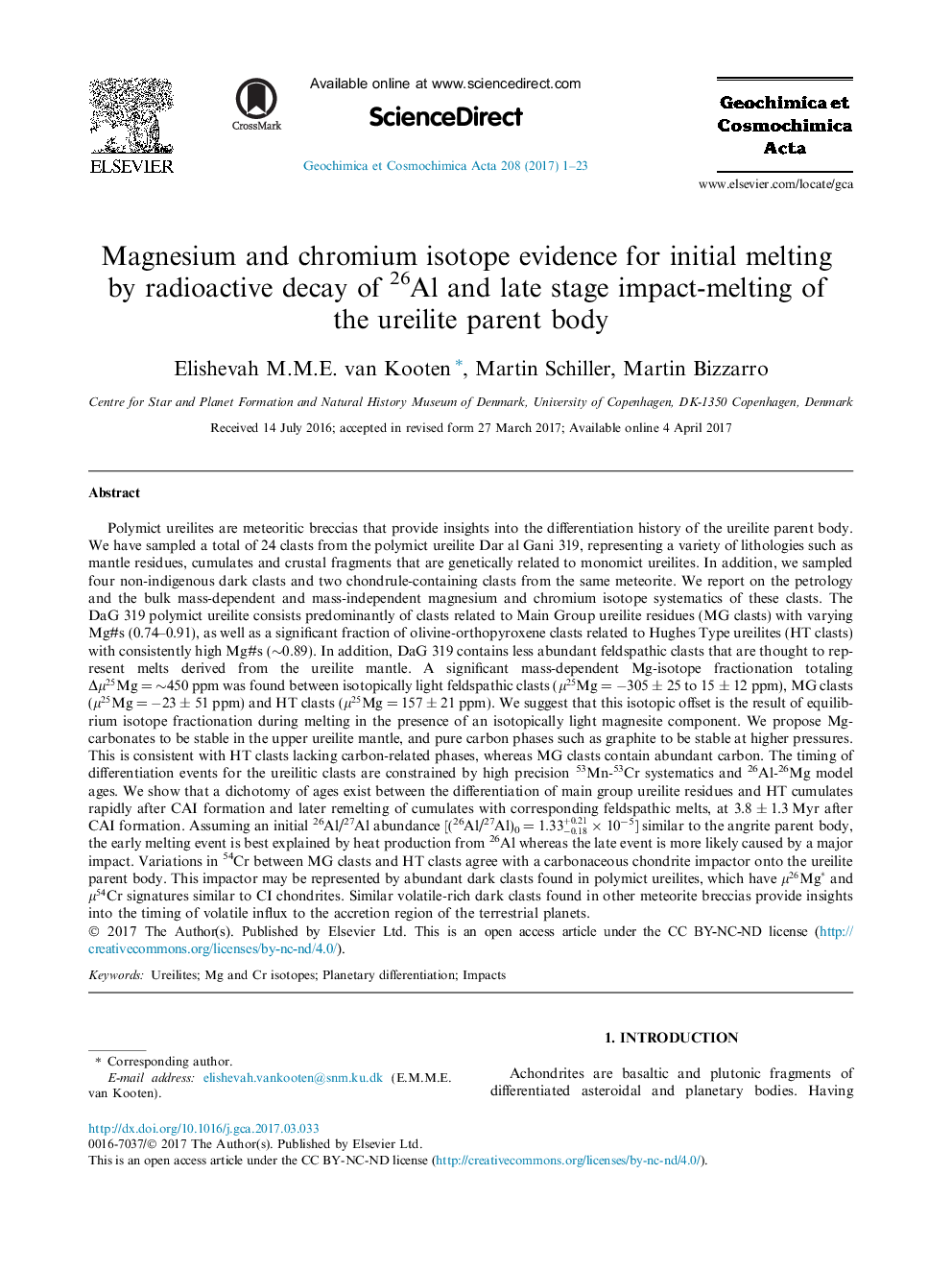| Article ID | Journal | Published Year | Pages | File Type |
|---|---|---|---|---|
| 5783434 | Geochimica et Cosmochimica Acta | 2017 | 23 Pages |
Abstract
Polymict ureilites are meteoritic breccias that provide insights into the differentiation history of the ureilite parent body. We have sampled a total of 24 clasts from the polymict ureilite Dar al Gani 319, representing a variety of lithologies such as mantle residues, cumulates and crustal fragments that are genetically related to monomict ureilites. In addition, we sampled four non-indigenous dark clasts and two chondrule-containing clasts from the same meteorite. We report on the petrology and the bulk mass-dependent and mass-independent magnesium and chromium isotope systematics of these clasts. The DaG 319 polymict ureilite consists predominantly of clasts related to Main Group ureilite residues (MG clasts) with varying Mg#s (0.74-0.91), as well as a significant fraction of olivine-orthopyroxene clasts related to Hughes Type ureilites (HT clasts) with consistently high Mg#s (â¼0.89). In addition, DaG 319 contains less abundant feldspathic clasts that are thought to represent melts derived from the ureilite mantle. A significant mass-dependent Mg-isotope fractionation totaling Îμ25Mg = â¼450 ppm was found between isotopically light feldspathic clasts (μ25Mg = â305 ± 25 to 15 ± 12 ppm), MG clasts (μ25Mg = â23 ± 51 ppm) and HT clasts (μ25Mg = 157 ± 21 ppm). We suggest that this isotopic offset is the result of equilibrium isotope fractionation during melting in the presence of an isotopically light magnesite component. We propose Mg-carbonates to be stable in the upper ureilite mantle, and pure carbon phases such as graphite to be stable at higher pressures. This is consistent with HT clasts lacking carbon-related phases, whereas MG clasts contain abundant carbon. The timing of differentiation events for the ureilitic clasts are constrained by high precision 53Mn-53Cr systematics and 26Al-26Mg model ages. We show that a dichotomy of ages exist between the differentiation of main group ureilite residues and HT cumulates rapidly after CAI formation and later remelting of cumulates with corresponding feldspathic melts, at 3.8 ± 1.3 Myr after CAI formation. Assuming an initial 26Al/27Al abundance [(26Al/27Al)0 = 1.33-0.18+0.21 Ã 10â5] similar to the angrite parent body, the early melting event is best explained by heat production from 26Al whereas the late event is more likely caused by a major impact. Variations in 54Cr between MG clasts and HT clasts agree with a carbonaceous chondrite impactor onto the ureilite parent body. This impactor may be represented by abundant dark clasts found in polymict ureilites, which have μ26Mgâ and μ54Cr signatures similar to CI chondrites. Similar volatile-rich dark clasts found in other meteorite breccias provide insights into the timing of volatile influx to the accretion region of the terrestrial planets.
Related Topics
Physical Sciences and Engineering
Earth and Planetary Sciences
Geochemistry and Petrology
Authors
Elishevah M.M.E. van Kooten, Martin Schiller, Martin Bizzarro,
